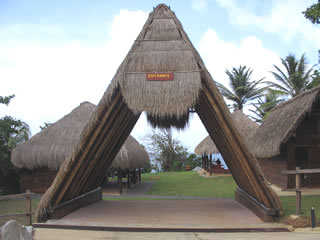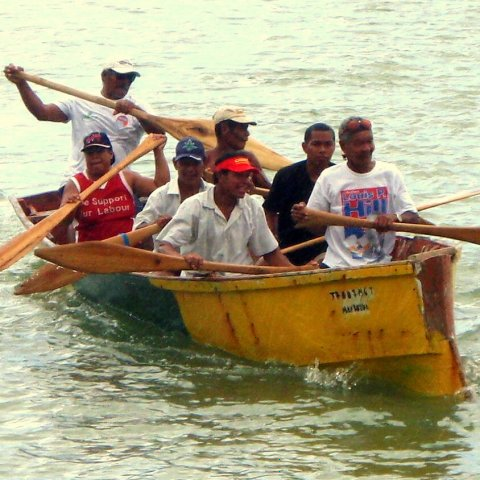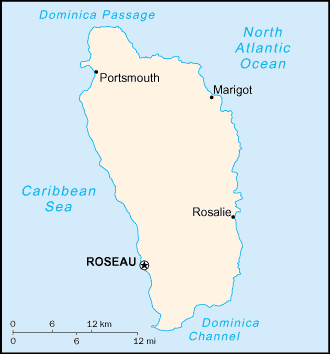Introduction
The Caribs, the first Dominica’s people, are considered to be the largest cultural group making about 3500 – 4000 people. The original name of the nation is Kalinago; its farms and homes are concentrated on eight hamlets, such as Crayfish, Bataca, Sinekou, Mahaut River, ST Cyr, Touna Aute, Salybia and Gaulette River. The nation is regarded to be peaceful and friendly by nature, though for decades, they have been characterized as ‘warlike and fierce’.
Main Body
Historical overview of the nation starts from the period, when Christopher Columbus landed within their territory in order to find gold in 1493; instead of this, he managed to find only the Caribs who settled on Dominica to be protected from enemies. The Kalinago population has considerably decreased through brutal treatment on the part of the French, Spanish and English. It is necessary to stress that the Caribs have their chief and council being elected every four years by Kalinago population; besides, the nation is presented in Dominica House of Assembly by a Parliamentary Representative, who is elected by the Kalinagos as well.
Analyzing the territory and activities of the Kalinago population, it is necessary to stress that people develop such spheres as fishing, and farming; besides, the nation is focused on cassava bread making as well as basket weaving. The Kalinagos strive to keep their cultural traditions unchanged in comparison with other island areas. The sphere of medicine is built on the usage of 300 different herbs; and this traditional method has been followed for generations without involvement of modern innovational technologies. It is interesting to stress that the territory which belongs to the Caribs, is communally owned; it means that no one can sell or buy its parts.
Nowadays the Kalinago people native land, Dominica, is considered to be in the center of tourism development; this aspect gave an opportunity to increase the population’s cultural heritage profile generating income from it. It is necessary to stress that major part of cultural customs and values has remained unchanged from the very start of the Caribs’ development as the nationality. For example, Carib women prefer pottery activity; they fashioned earthenware clays pots throughout the island; and some created pots were really functional, others were used for various ceremonial bowls decorated with pictures from legends and nature. It should be stressed, that today this activity is called Kalinago Barana Aute. This art was formed by Faustilus Frederick, Carib Chief of the 20th century, who was famous for his instrumentalism in the construction and design of the church.

The picture represents the houses built in Kalinago Barana Aute. The image demonstrates the cultural motives through the material usage for house building, underlining the population’s harmony with the nature.

The picture shows that canoe building is one of the traditional activities characterizing the Kalinago people; the first canoes were crafted by South Americans, the Kalinago people managed to develop their individual design and construction.
Nowadays, the Caribs culture is reflected by famous national groups, such as Karina Cultural Group and Karifuna Cultural Group. It is necessary to stress that the central aim of the groups is concentrated on maintaining and reviving Kalinagos’ traditions through dances and songs. The national cultural aspects are promoted throughout the world by these groups travelling across the Caribbean and South and North America. This piece of art is focused on drumming, singing and dancing; one should stress that the center of art and culture performance is considered to be the KBA (Kalinago Barana Aute), which is translated into English as ‘Kalinago cultural village by the sea’ (Crask, 139) This place is called showcase village, being opened in 2006, being aimed at the promotion of the Caris’ traditions and demonstration of pre-Columbian Amerindian settlement. The place is highly visited by the tourists striving to dive into the depth of Kalinagos’ culture and having an opportunity to learn more about their way of life. In fact, the culture of this population is very interesting and unique; the village is an integral part of their traditional values reflecting personal characteristics of the Kalinagos, such as hospitability, friendliness and kindness. For example, coming into the village provides a picture of the settlement with real people living in it, who are always ready to share their experience with the tourists. Nevertheless, it is considered to be the requirement for those who live there. It is interesting to note, that a warm welcome is always followed by the visitors’ walk to the house of basket weavers family. One can watch and try this activity feeling the motives of Kalinagos’ culture. Besides, the visitors have an opportunity to watch traditional making of fresh juice through special wooden sugarcane press. The village can be characterized as the mirror reflecting every detail of Kalinagos’ national culture starting with entertainment and up to secrets of traditional medicine. It was stated above, that the people stick to herbal methods of treatment, and Kalinago Barana Aute presents the whole encyclopedia of tropical flowers and natural medicines.

The map represents Dominica: Dominica is referred to the Caribbean islands settled by the Kalinago people, or the native Caribs. This land experienced corruption and tyrannical administration in the 19th century; nowadays it is inhabited by more than 3000 of the Caribs, developing their own culture and raising the significance of tourism.
Conclusion
To be aware of the way of cultural life peculiar for the Kalinago people and Caribbean islands, one can watch the film ‘Pirates of the Caribbean’. This work reflects the elements of Caribbean culture, national way of life, reflected through the clothes of the characters and their dwellings.
References
Crask, P. The Bradt Travel Guide: Dominica. Bradt Travel Guides, 2008.
Honychurch, L. The Dominica story: a history of the island. 3rd Edition, Macmillan, 1995.
Kalinago Touna Aute. 2008. Web.
Reid, B. Myths and Realities of Caribbean History. University of Alabama Press, 2009.